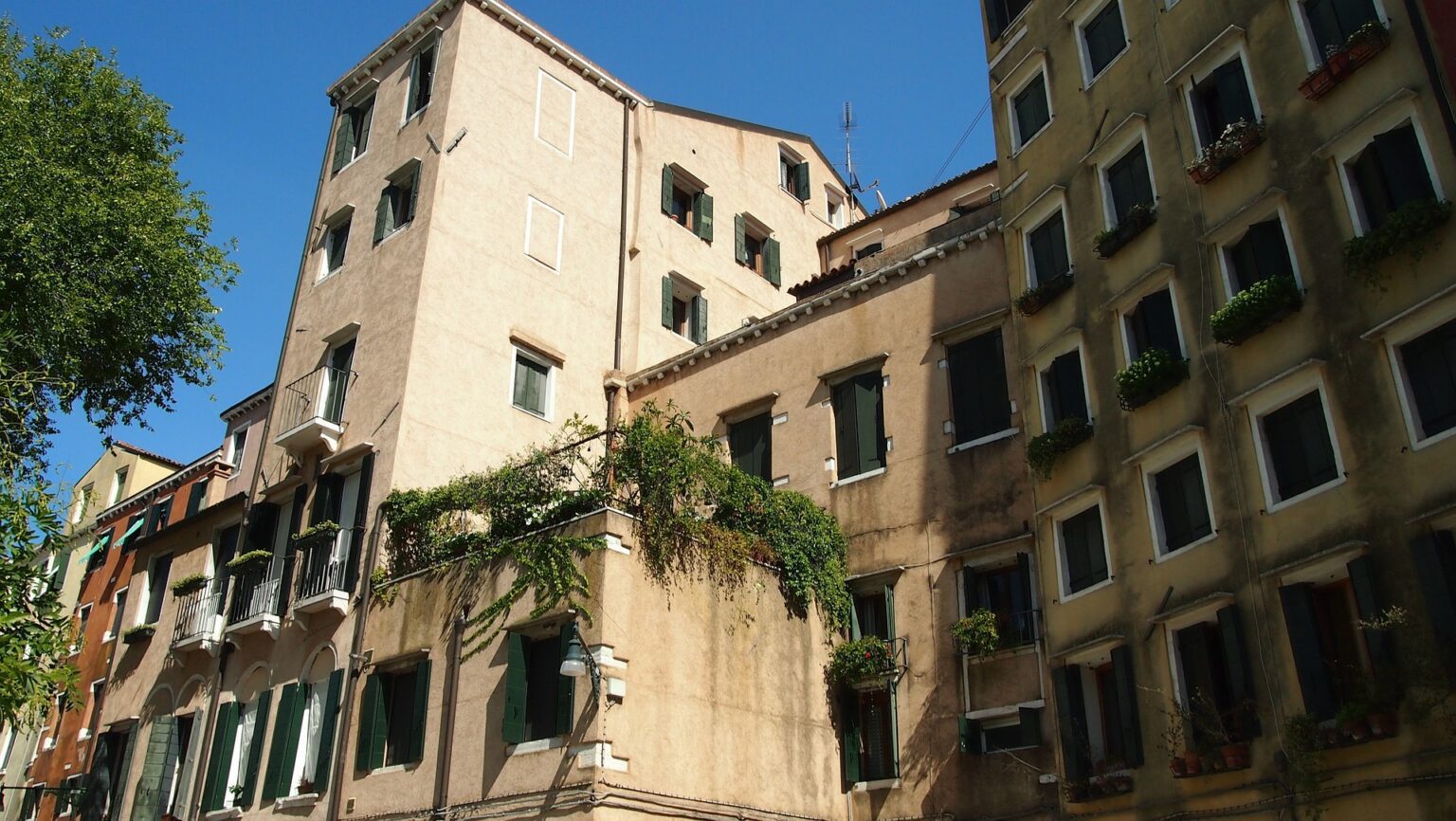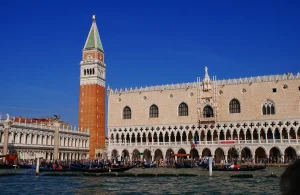The Jewish Ghetto in Venice: History, Life, and Legacy The Jewish Ghetto in Venice: History, Life, and Legacy
In the quiet Cannaregio district of Venice lies a place unlike any other — a small island of history, memory, and resilience: the Jewish Ghetto. Established in 1516, it was the first ghetto in the world, and its name became the word that would echo through centuries of European history. But beyond that painful legacy lies something remarkable — a story of perseverance, faith, and renewal that continues to this day.
📜 The Birth of the World’s First Ghetto
In the early 16th century, Venice was a thriving maritime power — wealthy, proud, and deeply Catholic. The city welcomed traders from all over the world, but it was also cautious, especially toward communities that didn’t share its faith. In March 1516, the Venetian Senate issued a decree that changed history: all Jews in the Republic were to live in a designated, enclosed area — the Ghetto Nuovo.
The term “ghetto” itself comes from the Venetian word ghèto, meaning “foundry,” as the area had previously been home to metal workshops. Ironically, from this industrial word would come a global term symbolizing segregation and exclusion.
The location, near the Cannaregio Canal, was chosen precisely because it was easy to control — surrounded by water and accessible only by two bridges. Every night, guards would close and lock the gates, trapping the residents inside until morning. By day, Jews could leave the ghetto to work, trade, or serve as doctors and moneylenders — but only if they wore a yellow badge or hat marking them as Jewish.
🏘️ Life Inside the Ghetto: Faith Behind Locked Gates
Life in the Venetian Ghetto was hard, but it was never lifeless. Despite the walls, the community flourished. The area was small — barely two hectares — and so buildings grew upward instead of outward, giving rise to some of the tallest houses in Venice, often six or seven stories high. The narrow courtyards and dim alleys echoed with Yiddish, Ladino, Italian, and Hebrew — a mixture of dialects that reflected the diversity of Jewish life in the city.
There were five main groups: the German, Italian, Levantine, Spanish, Portuguese, and Ponentine Jews — each with their own traditions and prayer styles. They worked as physicians, merchants, translators, and financiers. Venetian Jews were essential to the Republic’s economy, helping fund naval expeditions and international trade ventures.
Still, restrictions were strict. Jews could not own property, join guilds, or interact freely with Christians. But inside the ghetto, they built schools, synagogues, libraries, and a vibrant cultural life that defied oppression. It was, as one Venetian historian wrote, “a prison made sacred by intelligence.”
🕍 The Synagogues of the Venetian Ghetto
Hidden behind unassuming façades are some of the most beautiful and historically important synagogues in Europe. Because Jews were forbidden to build new places of worship openly, these synagogues — or scuole — were discreetly located on the upper floors of residential buildings. Their interiors, however, are breathtaking.
- Scuola Grande Tedesca (German Synagogue) – Founded in 1528, it is the oldest synagogue in Venice and stands as the spiritual heart of the Ashkenazi community. The high bimah (pulpit) and intricate woodwork reflect the style of Northern European Jews who first settled here.
- Scuola Canton – Established in 1532, this synagogue features extraordinary carved panels depicting biblical stories — a rarity in Jewish art, as most synagogues avoided figurative imagery. Each carving is filled with symbolism, showing how Jewish art adapted to Venetian creativity.
- Scuola Italiana – A simpler, more modest space, this synagogue represents the Italian Jews who had the fewest privileges yet the deepest local roots.
- Scuola Levantina and Scuola Spagnola – Built by the wealthier Sephardic Jews who arrived from the Ottoman Empire and Spain after their expulsion in 1492. Their synagogues are lavish, adorned with gilded wood, marble columns, and chandeliers worthy of a Doge’s palace.
All five synagogues survive today — a miracle of preservation and faith. Guided tours, organized by the Jewish Museum of Venice, allow visitors to enter these sacred spaces and hear their centuries-old stories.
🕯️ The Jewish Museum of Venice
Located in Campo del Ghetto Nuovo, the Jewish Museum of Venice offers a deep and moving look into the history of Jewish life in the city. Established in 1953, it houses an extraordinary collection of silver ritual objects, Torah scrolls, manuscripts, textiles, and historical documents.
One of the most poignant exhibits is a map showing the ghetto gates and curfews, a chilling reminder of centuries of exclusion. Yet the museum also highlights the creative brilliance of Venice’s Jews — their contributions to trade, printing, philosophy, and music. In fact, Venice once had one of the first Hebrew printing presses in Europe, producing prayer books and scholarly works that circulated across the continent.
🪔 The Stolpersteine: Stumbling Stones of Memory
As you walk through Venice, you may notice small brass squares glinting underfoot. These are Stolpersteine — or “stumbling stones” — placed outside the homes of Jews who were deported during the Holocaust. Each one bears a name, a date of birth, the place of deportation, and, most often, the haunting words: “Murdered in Auschwitz.”
The Stolpersteine project began in 1992, created by German artist Gunter Demnig to honor the victims of Nazi persecution across Europe. Venice joined the initiative in the early 2010s, with more stones added each year. Today, more than seventy Stolpersteine can be found across the city, particularly in the Jewish Ghetto, Dorsoduro, and San Polo districts.
Each stone represents not only a life lost but also a story returned to the streets. You might find one for Rosa Levi, deported in 1944, or Gino Veneziani, whose family owned a textile shop near Campo del Ghetto Vecchio. Residents and volunteers polish the stones regularly, ensuring their names never fade — a simple, human act of remembrance amid the city’s daily beauty.
During guided walks through the ghetto, visitors often stop in silence at these stones. The sound of footsteps on the pavement, the reflection of light on brass, and the sight of gondolas gliding by — it’s a reminder that even in a city of water and art, memory has weight.
If you’d like to see them with context and meaning, join our Off-the-Beaten-Path Orientation Tour, which includes a visit to the ghetto, synagogues, and the Stolpersteine sites — guided by a local historian who connects these quiet memorials to the living heart of Venice.
🕊️ The Ghetto After Liberation
When Napoleon’s troops entered Venice in 1797, they abolished the Venetian Republic and tore down the gates of the ghetto. For the first time in nearly three centuries, Venetian Jews were free to live where they pleased. Many moved to other parts of the city or the mainland, but the heart of their community remained in Cannaregio.
Over the following centuries, the ghetto evolved — from isolation to integration. Jewish scholars like Rabbi Leone da Modena and poets such as Sara Copio Sullam had already made it a center of thought and learning. By the 19th century, it was also a symbol — a place of memory, identity, and endurance.
Tragically, during World War II, the ghetto suffered again. In 1943, after the Nazi occupation of northern Italy, 246 Venetian Jews were deported to concentration camps. Only eight returned. Their names are inscribed on the memorial wall near the museum — a silent testimony to lives taken and a community that endured.
🏡 The Jewish Ghetto Today: A Living Community
Today, the Venetian Jewish Ghetto remains one of the city’s most atmospheric and authentic places. The same narrow bridges and quiet courtyards are still there, but now they hum with the sound of visitors, residents, and prayers.
In the Campo del Ghetto Nuovo, you’ll find kosher bakeries serving sweet hamantaschen and traditional Venetian pastries, small bookstores selling Hebrew texts, and cozy cafés where locals chat in Italian and Hebrew. The Rosh Hashanah and Yom Kippur processions still pass through these same streets, just as they have for over 500 years.
The ghetto is not a museum piece — it’s a neighborhood. Children play soccer near the fountain; elderly residents greet each other in the morning sun. Every stone tells a story, but life goes on — peacefully, proudly, and beautifully.
⚰️ The Jewish Cemetery on Lido Island
Across the lagoon, on the serene Lido Island, lies one of Europe’s oldest Jewish cemeteries — a place of reflection and peace that few visitors ever see. Established in the late 16th century, it was the first time Venetian Jews were allowed to bury their dead outside the ghetto walls.
Here, under cypress trees and sea breeze, lie centuries of Venetian Jewish history. Tombstones in Hebrew and Italian tell stories of merchants, rabbis, mothers, and soldiers. Some are beautifully carved with symbols of faith — menorahs, lions, hands in blessing — while others are simple stones worn smooth by time.
One of the most striking monuments is the memorial to Jewish soldiers who fought and died in World War II — a solemn reminder that even in exile, the Jewish people have always stood for their homeland and values. Nearby, the graves of 17th-century rabbis and scholars testify to a golden age of intellectual life in the ghetto.
The cemetery is open for guided visits and is part of many cultural itineraries exploring Venice’s spiritual and historic roots. It’s an emotional experience — quiet, beautiful, and deeply human.
🕯️ Memory and Meaning
The Jewish Ghetto in Venice is not only a site of remembrance — it’s a living chapter of human history. It tells of suffering, yes, but also of strength, creativity, and faith that refused to be extinguished. Every synagogue, every candle, every stumbling stone adds to its story.
As you walk its bridges, you’ll hear echoes of ancient chants, children’s laughter, and the hum of daily life. The ghetto’s legacy is not just Jewish — it’s universal. It reminds us that even behind walls, people can create beauty, art, and hope.
✨ Explore the Jewish Ghetto with Tour Leader Venice







